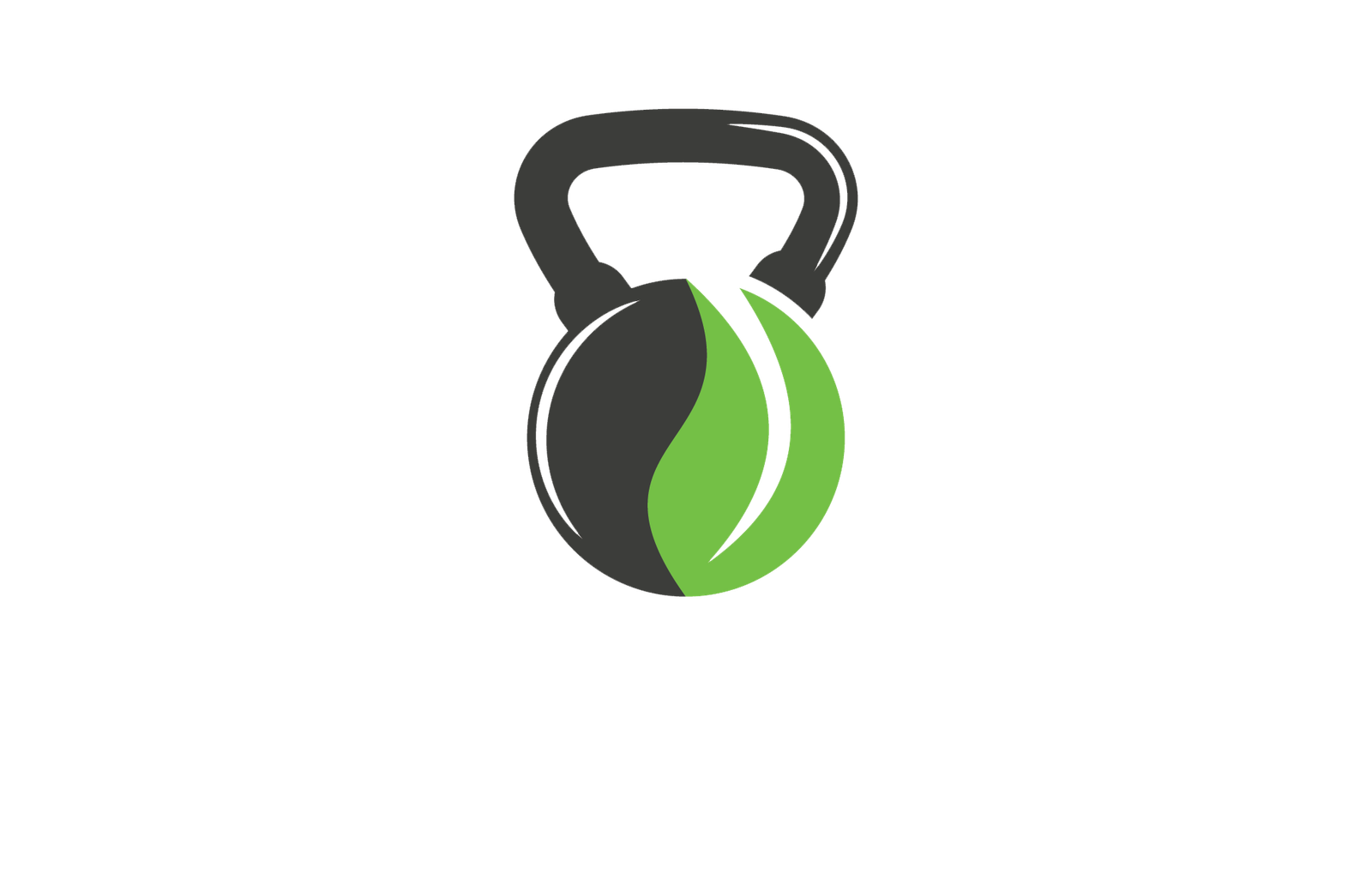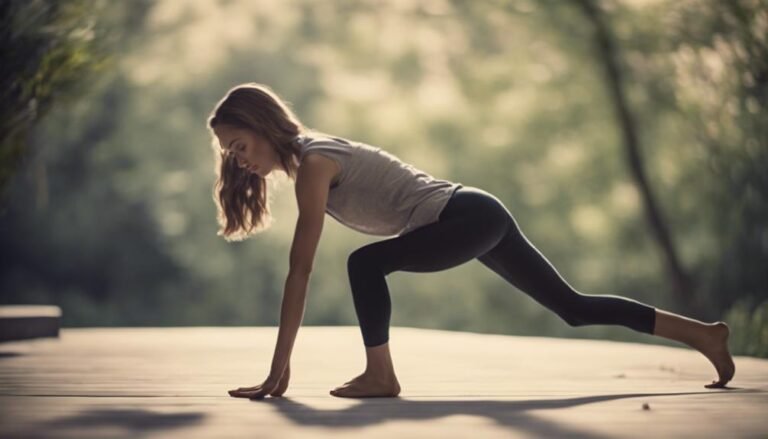Don't miss our holiday offer - 20% OFF!

Effective Foam Roller Exercises for Home Fitness
Boost your home fitness routine with targeted foam roller exercises that unlock improved flexibility, reduced muscle soreness, and enhanced athletic performance.
We've discovered that incorporating foam rolling exercises into our home fitness routine can be a game-changer for our overall health and athletic performance, allowing us to increase flexibility, reduce muscle soreness, and improve circulation. By targeting major muscle groups like our legs, glutes, and back, we can loosen tight muscles, reduce tension, and even alleviate pain. With regular foam rolling, we can improve our posture, reduce the risk of injury, and enhance our overall athletic performance. As we explore further, we'll uncover more effective foam roller exercises tailored to our specific fitness goals and needs.
Key Takeaways
- Incorporating foam rolling into your home fitness routine can increase flexibility, reduce muscle soreness, and improve circulation.
- Focus on rolling out major muscle groups, including legs, glutes, and back, to loosen tight muscles and increase blood flow.
- Regular foam rolling can help relieve tension and pain in areas such as the IT band, quadriceps, and hamstrings, reducing the risk of injury.
- Exercises targeting the glutes, hip flexors, and lower back can improve overall athletic performance, reduce the risk of strain, and alleviate lower back pain.
- Proper foam rolling techniques, including controlled movements and gentle pressure, are essential for effective self-myofascial release and maximum benefits.
Warming up With Foam Rolling
Before we get started with the meat of our workout, we warm up with foam rolling to increase blood flow and reduce muscle tension, preparing our bodies for the exercise ahead. This essential step is often overlooked, but it's vital for maximizing the effectiveness of our workout. By incorporating foam rolling into our routine, we can reap the Foam Benefits of increased flexibility, reduced muscle soreness, and improved circulation.
As part of our Rolling Preparation, we focus on rolling out our major muscle groups, including our legs, glutes, and back. This helps to loosen tight muscles and increase blood flow to the areas that need it most. By doing so, we're able to move more efficiently and effectively during our workout, reducing the risk of injury and improving overall performance. By taking the time to warm up with foam rolling, we're investing in a stronger, healthier, and more resilient body.
Rolling Out IT Band Tension
When we experience IT band pain, it's clear how debilitating it can be. As we roll out our IT bands, we're not just reducing tension, we're taking proactive steps to prevent future strains. By identifying the sources of IT band pain and addressing them quickly, we can get back to our active lifestyles with renewed confidence and flexibility.
Identifying IT Band Pain
We often experience IT band pain as a sharp, stinging sensation on the outside of our knee or thigh, usually after engaging in activities that involve repetitive knee bending or running. This pain can be a sign of underlying knee inflammation, which can lead to tissue damage if left untreated. To identify IT band pain, we need to recognize the characteristic pain patterns. Typically, the pain starts at the outside of our knee or thigh and radiates down towards the calf. In some cases, we may also experience pain in our hip or lower back. Muscle imbalance, where some muscles are overactive and others are underactive, can contribute to IT band pain. A biomechanics analysis can help identify faulty running gait patterns that may be putting excessive stress on our IT band. By recognizing these signs and identifying the underlying causes, we can take the first step towards relieving IT band pain and preventing further tissue damage.
Reducing Tension Quickly
To quickly alleviate IT band tension, our first line of defense is to roll out the affected area using a foam roller, focusing on the outer thigh and knee region where the IT band is most prone to inflammation. By incorporating this simple exercise into our morning routine, we can reduce tension and discomfort before it becomes a major issue. To do this, we'll start by positioning the foam roller under our outer thigh, just above the knee. From there, we'll slowly roll the foam roller up towards our hip, applying moderate pressure as we go. As we roll, we'll focus on applying extra pressure to any areas that feel particularly tender or tight. This targeted pressure can help to break up adhesions and reduce inflammation, leaving our IT band feeling looser and more relaxed. And the best part? This exercise can be done in just a few minutes, making it the perfect addition to our morning routine. We can even do it at our desk during a quick desk stretch, whenever we need a break from sitting.
Preventing Future Strains
Our daily foam rolling routine can also serve as a preventative measure, helping to prevent future IT band strains by breaking up adhesions and maintaining peak muscle flexibility. By incorporating foam rolling into our regular exercise routine, we can substantially reduce the risk of injury. This is especially important for runners and cyclists who are particularly prone to IT band strains. Regular foam rolling helps to reduce muscle imbalances and improves muscle maintenance, which in turn reduces the likelihood of injury. By breaking up adhesions and scar tissue, we can improve our range of motion and reduce muscle soreness. This proactive approach to injury reduction is essential for athletes and fitness enthusiasts alike. By making foam rolling a priority, we can enjoy our favorite activities without the fear of injury holding us back. With consistent practice, we can maintain prime muscle health and performance, ensuring we're always at the top of our game.
Quads and Hamstrings Relief
Rolling out our quadriceps and hamstrings with a foam roller can be a game-changer for relieving tension and improving flexibility in these hard-working muscle groups. We're talking about the muscles that take the brunt of our daily activities, from walking to running to jumping. It's no wonder they can get tight and sore! By using a foam roller, we can release tension and promote quad stretching, which is essential for maintaining healthy knee alignment and preventing injuries.
As we roll out our hamstrings, we're also improving hamstring alignment, which is vital for proper movement patterns. When our hamstrings are tight, they can pull our knees out of alignment, leading to poor posture and increased risk of injury. By releasing tension in these areas, we can improve our overall athletic performance and reduce our risk of strain. By incorporating foam rolling into our routine, we can keep our quads and hamstrings happy, healthy, and ready for whatever life throws our way.
Glute Activation Exercises
We frequently find that weak glutes can lead to poor posture, lower back pain, and even knee injuries, making glute activation exercises a crucial component of our overall fitness routine. As we strengthen our glutes, we improve our pelvic alignment, which in turn enhances our overall posture and reduces our risk of injury.
To target our glutes effectively, we incorporate the following exercises into our routine:
- Glute Bridges: Lie on our back with our knees bent and feet flat on the floor. Slowly lift our hips up towards the ceiling, squeezing our glutes at the top, and then lower back down.
- Foam Roller Glute Rolls: Place the foam roller under our glutes, with our knees bent and feet flat on the floor. Roll the foam roller back and forth, applying pressure to our glutes.
- Side-Lying Leg Lifts: Lie on our side with our legs straight, lifting the top leg up towards the ceiling. Lower our leg back down, and repeat on the other side.
Lower Back Pain Relief
One in five adults suffer from lower back pain, and incorporating foam roller exercises into our routine can provide much-needed relief. We've found that regular foam rolling can help alleviate lower back pain by improving spinal alignment and reducing disc pressure. When we use a foam roller to release tension in our back muscles, we're able to maintain a healthier spine and reduce the pressure on our discs. This can be especially helpful for those of us who spend a lot of time sitting or have jobs that involve heavy lifting.
In addition to improving spinal alignment and reducing disc pressure, foam rolling can also help with core strengthening. A strong core is essential for supporting our lower back, and foam rolling can help engage our core muscles and improve our overall posture. By incorporating foam roller exercises into our routine, we can experience significant relief from lower back pain and improve our overall quality of life. With regular practice, we can say goodbye to aches and pains and hello to a stronger, healthier back.
Improving Hip Flexibility
By incorporating foam roller exercises into our routine, we can increase our hip flexibility by up to 20% in just a few weeks. This is because foam rolling helps to break down adhesions and scar tissue in the muscles and connective tissue, allowing for greater range of motion and reduced stiffness.
To improve hip mobility, we can focus on exercises that target the iliotibial (IT) band, glutes, and hip flexors. Here are a few exercises to get us started:
- IT Band Roll: Place the foam roller under our outer thigh, just above the knee. Slowly roll up towards the hip, applying pressure to the IT band.
- Glute Release: Sit on the foam roller with it placed under our glutes. Roll slowly back and forth, releasing tension in the glutes and piriformis.
- Hip Flexor Roll: Kneel on all fours with the foam roller under our hip flexors. Roll slowly forward and backward, releasing tension in the hip flexors.
Foam Rolling for Runners
As runners, it's clear that frequent running can lead to tight IT bands, sore glutes, and stiff hip flexors, making targeted foam roller exercises a game-changer for improved performance and reduced injury risk. It's evident that incorporating foam rolling into our routine can notably reduce our risk of running injuries, such as shin splints and plantar fasciitis. By using a foam roller to release tension in our IT bands, glutes, and hip flexors, we can improve our running efficiency, reduce muscle soreness, and even enhance our marathon recovery. In fact, studies have shown that foam rolling can reduce muscle soreness by up to 20% after intense exercise. By incorporating foam rolling into our post-run routine, we can get back to our training sooner, and with less downtime. By targeting our trouble spots with focused foam roller exercises, we can take our running to the next level – and stay injury-free in the process.
Self-Myofascial Release Techniques
We use self-myofascial release techniques to take control of our muscle recovery, employing tools like foam rollers to release tension in our muscles and connective tissue. By incorporating these techniques into our workout routine, we can improve flexibility, reduce muscle soreness, and enhance overall performance.
When using self-myofascial release techniques, we must concentrate on specific areas of tension. We do this through fascia exploration, identifying areas of restriction and adhesion in our connective tissue. This process is similar to muscle mapping, where we chart our progress and identify areas that require more attention.
Some key benefits of self-myofascial release techniques include:
- Reduced muscle tension and improved flexibility
- Enhanced recovery and reduced muscle soreness
- Improved range of motion and athletic performance
Reducing Muscle Soreness Quickly
As we explore the benefits of foam rolling, we're particularly interested in reducing muscle soreness quickly. We've all been there – pushing ourselves too hard and paying the price afterwards – but with the right techniques, we can alleviate that discomfort fast. Now, let's examine the fast relief techniques and soothing strategies that'll get us back to our best in no time.
Fast Relief Techniques
When muscle soreness strikes, incorporating targeted foam rolling exercises into our routine can substantially reduce discomfort and get us moving freely again. Fast relief techniques are essential for effective pain management, allowing us to bounce back quickly from intense workouts or everyday stress. We've found that focusing on specific areas of tension can make all the difference in our overall comfort level.
Here are some quick fixes to get us started:
- Targeted rolling: Identify areas of high tension and spend some quality time rolling them out. This helps to increase blood flow, reduce inflammation, and break up adhesions.
- Self-myofascial release: Use our foam roller to release tension in our connective tissue, allowing for greater range of motion and reduced muscle soreness.
- Trigger point therapy: Apply sustained pressure to specific trigger points to release tension and ease pain.
Soothing Sore Muscles
To reduce muscle soreness quickly, I focus on rolling out specific areas of tension, using sustained pressure to release trigger points and ease pain. We've all been there – waking up after a tough workout, feeling like we've been put through a wringer. But with the right foam roller techniques, we can accelerate muscle relaxation and get back to our fitness routine in no time.
When it comes to pain management, targeting the right spots is vital. We start by identifying areas of tension, such as the IT band, quadriceps, and hamstrings. Then, we apply sustained pressure to release the knots and kinks that are causing discomfort. By focusing on these specific areas, we can reduce muscle soreness quickly and effectively.
To take it to the next level, we incorporate slow, controlled movements to help our muscles relax and recover. This not only reduces pain but also improves flexibility and range of motion. By incorporating these techniques into our post-workout routine, we can bounce back faster and stronger, ready to take on our next fitness challenge.
Foam Rolling for Cyclists
We cyclists know that a rigorous ride can leave our legs screaming for mercy, but incorporating foam rolling into our post-ride routine can help alleviate that soreness and get us back on the bike faster. By targeting specific areas, we can improve our overall Cycling Cadence and Bike Fit, leading to more efficient and comfortable rides.
Here are some key areas to focus on:
- IT Band and Quads: Roll out your IT band to reduce friction and alleviate knee pain. This is especially important for cyclists who tend to have a more aggressive pedaling style.
- Calves and Achilles: Tight calf muscles can lead to discomfort and poor pedaling form. Foam rolling helps to loosen these areas, promoting a more efficient pedal stroke.
- Glutes and Piriformis: Weak glutes and tight piriformis muscles can cause poor bike fit and discomfort. Foam rolling helps to strengthen and loosen these areas, leading to a more comfortable ride.
Upper Back and Shoulder Relief
As cyclists, we often neglect our upper bodies, but tight shoulders and upper back muscles can profoundly impact our riding comfort and performance, making it essential to incorporate targeted foam rolling exercises into our routine.
Fortunately, incorporating foam rolling exercises into our routine can help alleviate tension and improve our overall cycling experience. By targeting the upper back and shoulder muscles, we can achieve better posture correction and muscle relaxation.
To start, we'll focus on rolling out our trapezius muscles, which run from the base of our skull to our shoulder blades. Lie on your back with the foam roller under your upper back, just below your shoulder blades. Slowly roll the foam roller up towards your shoulders, applying moderate pressure. Hold for 30 seconds and repeat for 3-4 sets.
Next, we'll target our rhomboids, which are the muscles between our shoulder blades. Place the foam roller under your upper back, perpendicular to your spine. Slowly roll the foam roller across your upper back, applying moderate pressure. Hold for 30 seconds and repeat for 3-4 sets.
Improving Posture With Foam Rolling
By incorporating targeted foam rolling exercises into our routine, we can improve our posture by releasing tension in the upper back and shoulder muscles, allowing us to maintain a more upright riding position and reduce fatigue. This is especially important for those who spend extended periods sitting or engaging in activities that involve leaning forward.
By focusing on exercises that target the latissimus dorsi, rhomboids, and trapezius muscles, we can improve our spinal alignment and reduce the strain on our upper back and shoulders. This, in turn, can help us maintain better posture and reduce our risk of developing musculoskeletal disorders.
Some exercises to try include:
- Rolling our upper back and shoulders to release tension and improve range of motion
- Engaging our core muscles to support our spine and improve posture
- Targeting our latissimus dorsi muscles to improve our overall spinal alignment
Foam Rolling for Beginners
Getting started with foam rolling can seem intimidating, but with a few simple tips and techniques, you'll be rolling like a pro in no time. As we begin, focus on proper alignment is vital. We'll start by lying on our backs, with our feet planted firmly on the ground and our knees bent at a 90-degree angle. This position allows us to maintain control and balance while rolling. Next, we'll engage our core by drawing our belly button towards our spine, which helps stabilize our body and maintain proper alignment.
As we begin to roll, we'll start with slow, controlled movements, applying gentle pressure to our muscles. Listening to our bodies and adjusting the pressure accordingly is key. If we encounter a tender spot, we'll hold for 20-30 seconds to allow the muscle to release. Remember, foam rolling is not about forcing our way through pain, but rather about gentle, controlled movements that promote relaxation and flexibility. By following these simple tips, we'll be well on our way to becoming foam rolling pros and enjoying the many benefits it has to offer.
Advanced Foam Rolling Exercises
As we progress to advanced foam rolling exercises, we're going to focus on two key techniques that will take our self-myofascial release to the next level: trigger point release and deep tissue massage. These techniques require more precision and control, but they can be incredibly effective in releasing tension and improving flexibility. By mastering these advanced techniques, we can target specific areas of tension and access even greater benefits from our foam rolling routine.
Trigger Point Release
We target specific knots and adhesions in our muscles using advanced foam rolling exercises that focus on trigger point release, a technique that can be both intense and rewarding. By applying sustained pressure on these areas, we can release tension and alleviate pain. This process is known as myofascial mapping, where we identify and address specific areas of tension in our muscles.
When we release these trigger points, we can experience relief from pain referral, which is when pain is felt in a different area of the body than the actual source of the pain. By releasing these knots, we can restore normal muscle function and reduce pain.
Here are some key benefits of incorporating trigger point release into our foam rolling routine:
- Reduced muscle tension and pain
- Improved range of motion and flexibility
- Enhanced athletic performance and recovery
We can incorporate trigger point release into our foam rolling routine to take our fitness to the next level and experience the many benefits it has to offer.
Deep Tissue Massage
Taking our foam rolling routine to the next level, we're now ready to tackle advanced techniques that mimic the effects of deep tissue massage. This type of manual therapy is designed to target the deeper layers of soft tissue, which can become restricted and lead to pain and stiffness. By using our foam roller to apply sustained pressure, we can break up adhesions and scar tissue, promoting healthy blood flow and reducing inflammation.
To perform deep tissue massage-like exercises, we'll focus on slow, controlled movements, applying maximum pressure to specific areas. This can be uncomfortable at first, but the benefits are well worth it. We'll target areas like the IT band, quadriceps, and glutes, using long, sweeping strokes to release tension and promote relaxation. Remember to breathe deeply and slowly, as we work through the discomfort, and don't be afraid to adjust pressure or take breaks as needed. With consistent practice, we can experience improved flexibility, reduced muscle soreness, and enhanced overall well-being.
Foam Rolling for Athletes
When incorporating foam rolling into our training regimens, athletes can substantially improve performance by reducing muscle soreness and enhancing recovery. By incorporating foam rolling into our routine, we can reduce the risk of sports injuries and improve our overall performance. This is especially important for athletes who engage in high-intensity activities, as foam rolling can help to reduce muscle fatigue and improve flexibility.
In addition to reducing muscle soreness, foam rolling can also help to:
- Improve circulation and reduce inflammation
- Enhance range of motion and flexibility
- Reduce muscle tension and improve overall athletic performance
Frequently Asked Questions
Can I Use a Foam Roller on My Neck and Throat Area?
"We're cautious when using a foam roller on our neck and throat area, as improper alignment can cause strain. Instead, we focus on gentle, controlled movements to maintain neck alignment and promote throat relaxation."
Are There Specific Foam Rollers for Different Body Types?
As we navigate the world of foam rolling, we find that yes, there are rollers tailored to specific body types, with varying densities and roller materials, such as EVA foam or PVC, catering to diverse needs and preferences.
Can I Use a Foam Roller on My Face for Facial Massages?
We're curious about using foam rollers on our faces, and the verdict is: yes, it's possible! Facial tension can be relieved, and skin health improved, but we must be gentle and cautious when rolling out our facial muscles.
How Often Should I Clean and Disinfect My Foam Roller?
"We're not germaphobes, but honestly, cleaning our foam rollers is a must! We sanitize ours weekly, using a mix of soap and water, then disinfecting with a bleach solution – our Foam Roller Maintenance 101."
Are Foam Rollers Suitable for People With Sensitive Skin?
It's reassuring to know that sensitive skin can be a concern; fortunately, foam rollers are generally suitable for people with skin allergies, as long as gentle pressure is used and rollers are cleaned regularly to prevent any irritation.
Conclusion
As we wrap up our foam rolling journey, we've discovered the secrets to a stronger, more agile, and pain-free us. Like a master key, foam rolling has opened doors to improved posture, relieved tension, and activated our glutes. We've discovered that with consistent practice, our bodies can become resilient and adaptable, ready to take on any challenge that comes our way. And as we roll away, we're reminded that the greatest investment we can make is in ourselves – a wisdom that echoes through every fiber of our being.



